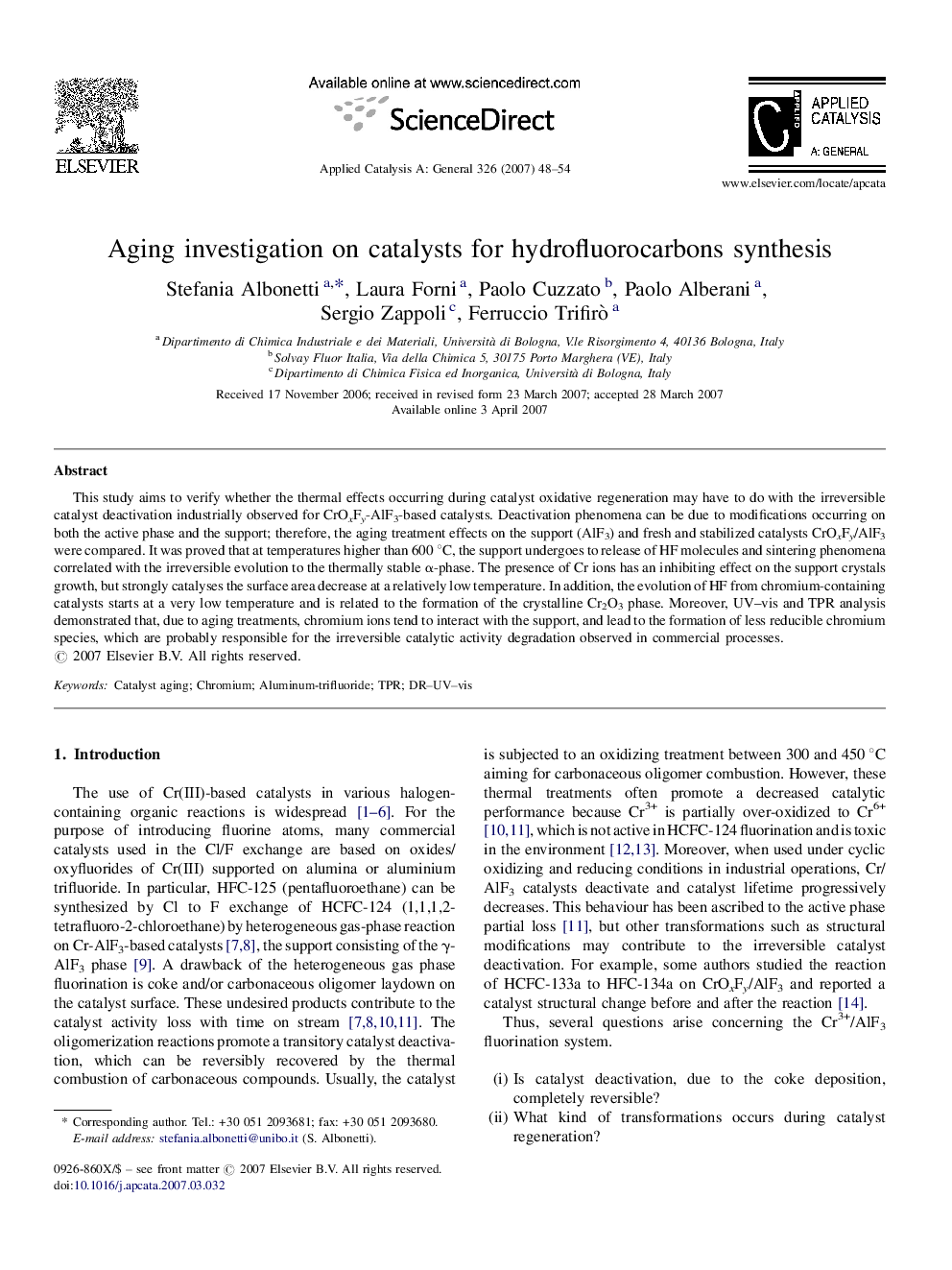| کد مقاله | کد نشریه | سال انتشار | مقاله انگلیسی | نسخه تمام متن |
|---|---|---|---|---|
| 44328 | 46015 | 2007 | 7 صفحه PDF | دانلود رایگان |

This study aims to verify whether the thermal effects occurring during catalyst oxidative regeneration may have to do with the irreversible catalyst deactivation industrially observed for CrOxFy-AlF3-based catalysts. Deactivation phenomena can be due to modifications occurring on both the active phase and the support; therefore, the aging treatment effects on the support (AlF3) and fresh and stabilized catalysts CrOxFy/AlF3 were compared. It was proved that at temperatures higher than 600 °C, the support undergoes to release of HF molecules and sintering phenomena correlated with the irreversible evolution to the thermally stable α-phase. The presence of Cr ions has an inhibiting effect on the support crystals growth, but strongly catalyses the surface area decrease at a relatively low temperature. In addition, the evolution of HF from chromium-containing catalysts starts at a very low temperature and is related to the formation of the crystalline Cr2O3 phase. Moreover, UV–vis and TPR analysis demonstrated that, due to aging treatments, chromium ions tend to interact with the support, and lead to the formation of less reducible chromium species, which are probably responsible for the irreversible catalytic activity degradation observed in commercial processes.
This study is aimed at verifying whether the thermal effects occurring during the catalyst oxidative regeneration may deal with the irreversible catalyst deactivation industrially observed for Cr-AlF3-based catalysts. It was proved that due to the aging treatments, Cr3+ ions interact with the support, and lead to the formation of less reducible Cr3+ species.Figure optionsDownload as PowerPoint slide
Journal: Applied Catalysis A: General - Volume 326, Issue 1, 30 June 2007, Pages 48–54